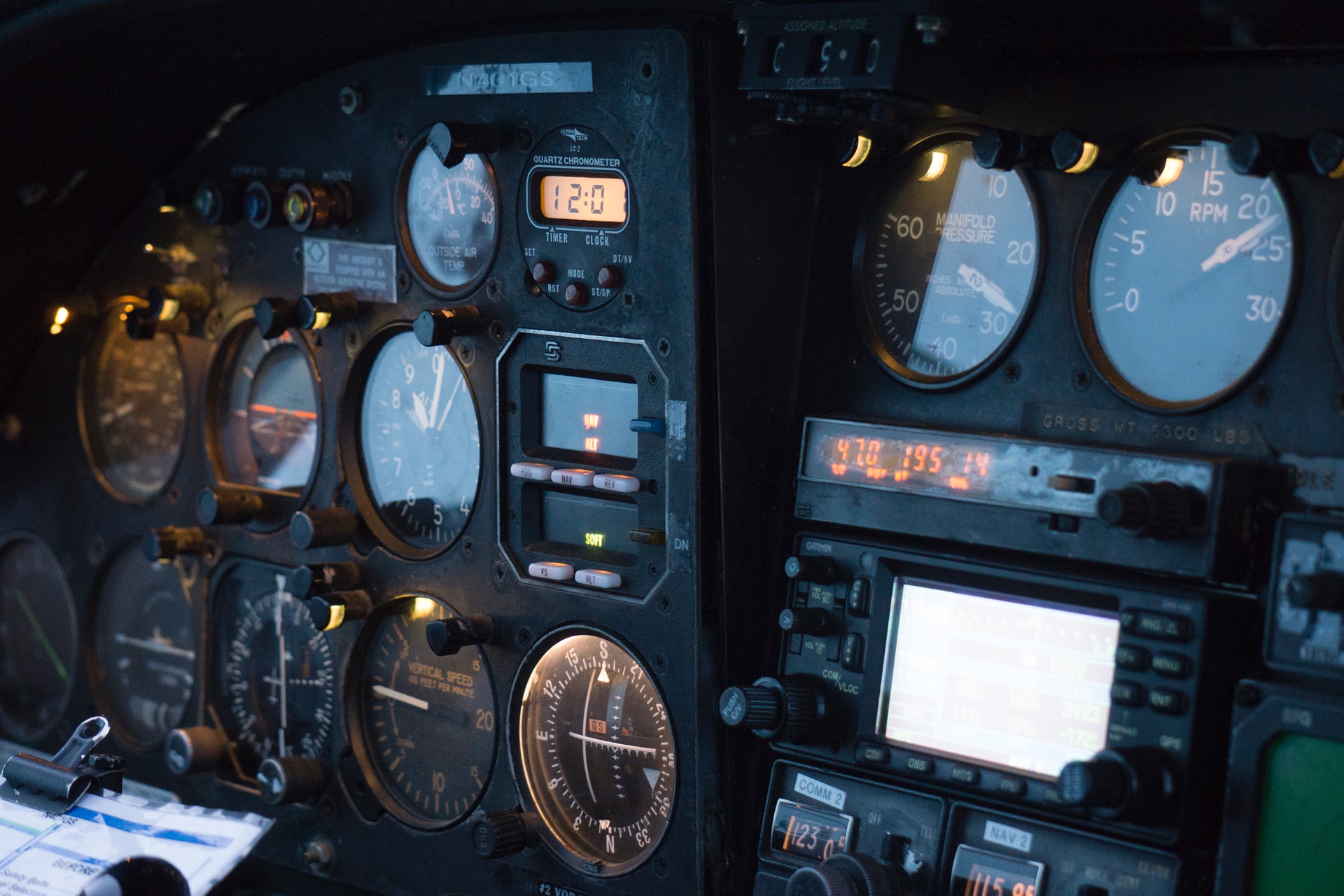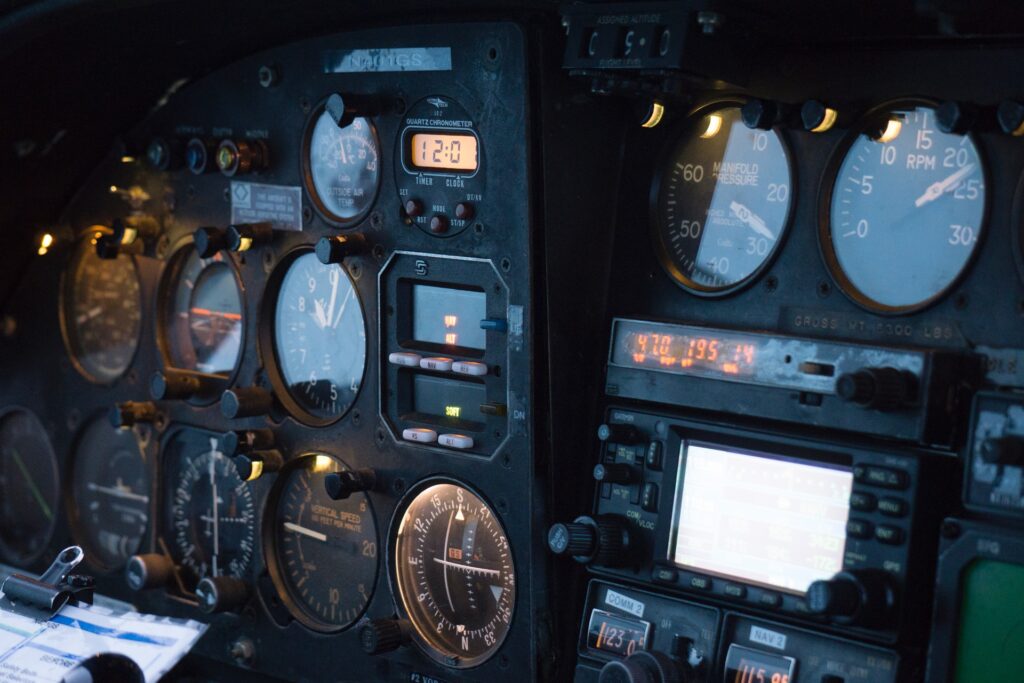
How to Get a Cessna 150 IFR Certified (IFR Airworthiness)
As you’ve no doubt already noticed, the Cessna 150 is a super popular airplane for flight training. Given its average list price of around $40,000 and its low operating cost of just about $60 per hour, it’s easy to see why flight schools love it.
But if you’re considering using a Cessna 150 for advanced flight training, like getting an instrument rating, or are planning to buy one for yourself, it’s important to think about whether the plane is suitable for flights under instrument flight rules (IFR).

So, can a Cessna 150 be IFR certified?
A Cessna 150 can be IFR certified if equipped with the 20 or more instruments and devices specified under section 91.205 of the Federal Aviation Regulations (FARs). The exact equipment configuration depends on the route to be flown. Other recency requirements also apply.
This post explains everything you need to know about the legal airworthiness requirements for IFR flight in a Cessna 152, including the exact instruments and equipment you’ll need based on where you’re flying from, through, and to.
Let’s start by clarifying the most confusing aspect of IFR certification.
What Makes a Plane IFR Certified?
To be fully compliant with all legal airworthiness requirements under IFR, there are four separate sets of requirements that an airplane must fulfill:
- The model must be certified for IFR flight, as positively stated in the model’s Type Certificate Data Sheet (TCDS) for civil aircraft with standard category U.S. airworthiness certificates, or as stated in the Operating Limitations for experimental / homebuilt aircraft;
- It must be fitted with the instruments and equipment specified under FAR section 91.205, all of which need to be serviceable when departing;
- It must be fitted with the instruments and equipment specified in the Minimum Equipment List (MEL), if an MEL exists, or with the items marked as “required” in the equipment list of the aircraft’s Pilot Operating Handbook (POH). Requirements in the MEL are applicable in addition to those in FAR 91.205, and do not supersede FAR 91.205 requirements.
- All instruments and equipment for which inspections are required under FAR section 91.4, have been certified serviceable within the stipulated inspection window.
Note that these are the requirements only for general aviation fixed-wing flights operating under Part 91 of the FARs, while a different set of regulations apply to scheduled commercial flights (Part 121 and 129), and non-scheduled commercial operations (Part 135).
Let’s break down what each of the requirements listed above actually means for a Cessna 150.
Certifications in TCDS / Operating Limitations
Since the Cessna 150 is a type certificated aircraft with a standard airworthiness certificate (not an experimental or homebuilt plane with a special certificate), its certification for IFR flight is mentioned in its FAA Type Certificate Data Sheet (TCDS). Here is the line from the Cessna 150’s TCDS:
This airplane is certified for the following flight operations as of date of original airworthiness certificate:
(DAY - NIGHT - VFR - IFR) (As Applicable)
A TCDS for the Cessna 150 dated 2015 is available here, and you can check whether there are more recent versions by searching the FAA TCDS database.
IMPORTANT: Note that this endorsement in the TCDS only implies that the type, in general, is suitable for IFR flight, ONLY IF the specific, individual airplane in question is fitted with the necessary functional instruments and equipment. In other words, the certification in the TCDS is necessary but not sufficient by itself.
Requirements Under FAR 91.205
In addition to the standard setup required for flight under Visual Flight Rules (VFR), a Cessna 150 needs a number of additional instruments and equipment for IFR operation, as prescribed under FAR 91.205.
Note that although the equipment listed in FAR 91.205 is sufficient for legal compliance, in real life, it is highly desirable that the airplane be equipped with a few additional devices, which we will discuss later in this post. The table below provides the checklist of the minimum equipment required for IFR operations in a Cessna 150.
| Sl | Instrument / Equipment | VFR Day | VFR Night | IFR Day | IFR Night |
|---|---|---|---|---|---|
| 1 | Airspeed indicator | ✔ | ✔ | ✔ | ✔ |
| 2 | Altimeter | ✔ | ✔ | ✔ | ✔ |
| 3 | Magnetic direction indicator | ✔ | ✔ | ✔ | ✔ |
| 4 | Tachometer for each engine | ✔ | ✔ | ✔ | ✔ |
| 5 | Oil pressure gauge for each engine using pressure system | ✔ | ✔ | ✔ | ✔ |
| 6 | Temperature gauge for each liquid-cooled engine | ✔ | ✔ | ✔ | ✔ |
| 7 | Oil temperature gauge for each air-cooled engine | ✔ | ✔ | ✔ | ✔ |
| 8 | Manifold pressure gauge for each altitude engine | ✔ | ✔ | ✔ | ✔ |
| 9 | Fuel gauge indicating the quantity of fuel in each tank | ✔ | ✔ | ✔ | ✔ |
| 10 | Flotation gear for each occupant and at least one pyrotechnic signaling device, if operated for hire over water and beyond power-off gliding distance from shore | ✔ | ✔ | ✔ | ✔ |
| 11 | An approved safety belt with an approved metal-to-metal latching device, or other approved restraint system for each occupant over 2 years of age | ✔ | ✔ | ✔ | ✔ |
| 12 | An Emergency Locator Transmitter (ELT) | ✔ | ✔ | ✔ | ✔ |
| 13 | Gyroscopic rate-of-turn indicator | ✔ | ✔ | ||
| 14 | Slip-skid indicator | ✔ | ✔ | ||
| 15 | Sensitive altimeter adjustable for barometric pressure | ✔ | ✔ | ||
| 16 | Gyroscopic pitch and bank indicator (artificial horizon) | ✔ | ✔ | ||
| 17 | Gyroscopic direction indicator (directional gyro or equivalent) | ✔ | ✔ | ||
| 18 | A clock displaying hours, minutes, and seconds with a sweep-second pointer or digital presentation | ✔ | ✔ | ||
| 19 | Two-way radio communication equipment | ✔ | ✔ | ||
| 20 | Navigation equipment suitable for the route to be flown* | ✔ | ✔ | ||
| 21 | Generator or alternator of adequate capacity | ✔ | ✔ | ||
| 22 | Approved position lights | ✔ | ✔ | ||
| 23 | Approved aviation-red / aviation-white anti collision light | ✔ | ✔ | ||
| 24 | Electric landing light if the aircraft is operated for hire | ✔ | ✔ | ||
| 25 | Source of electrical energy that is adequate for all installed electrical, avionic, and radio equipment | ✔ | ✔ | ||
| 26 | One spare set of fuses, accessible to the pilot during flight | ✔ | ✔ |
*Note: Row 20 in the table above is from 91.205(d)(2), which vaguely mandates navigation equipment that’s “suitable for the route to be flown”. This requires further explanation.
What Navigation Equipment Do You Need to Fly IFR for a Given Route?
In theory, it is possible to make a Cessna 150 airworthy for IFR operations with just a single VOR, if you can find a route with an instrument approach that can be executed with just one VOR.
Practically speaking, in the United States, you’re much more likely to find approaches with GPS, ILS, and VOR-DME. Therefore, a Cessna 150 meant for actual IFR flight will realistically require at least an IFR-certified GPS (like the Garmin 430, for example), and a WAAS GPS (like the Garmin 430W) is preferable for vertical approach guidance.
For flight training, a Cessna 150 will require an ILS in addition to a VOR or GPS, because the instrument flight check ride requires at least one precision approach. (GPS or WAAS GPS-based approaches, like LPV, LNAV, and VNAV approaches are not considered precision approaches, even though they often have minimums that are as good as ILS.)
MEL / POH Equipment List Requirements
Although the Cessna 150 does not have a master minimum equipment list, Cessna does specify required, standard, and optional equipment items in the POH. A variety of items on this list (such as the ammeter, fuel cluster, and carb heat, to name just a few) are specified as “required equipment”, but are not covered under 91.205.
Technically speaking, these items are required for any flight in the Cessna 150, not just for IFR flight. But it’s worth ensuring that all of these items are installed and serviceable, especially before flying into IMC. (Note that the Cessna 150 is not approved for intentional flight into known icing conditions.)
Inspection Requirements
The following instruments and equipment need to be certified serviceable in the aircraft’s maintenance logbook, as specified variously under FAR sections 91.207, 91.411, and 91.413.
| Instrument / Equipment | VFR | IFR | Inspection Window |
|---|---|---|---|
| Emergency Locator Transmitter | ✔ | ✔ | 12 calendar months |
| Transponder | ✔ | ✔ | 24 calendar months |
| Static System | ✔ | 24 calendar months | |
| Altimeter | ✔ | 24 calendar months | |
| Automatic Pressure Altitude Reporting System | ✔ | 24 calendar months |
Other Recommendations for IFR Flight
Although these are the minimum legal requirements for IFR flight, pilot workload can increase dramatically when executing IFR procedures, particularly during holding pattern entry, approach, and missed approach procedures. For this reason, it's a good idea to equip the plane with an autopilot, even if it's just a single-axis autopilot.
